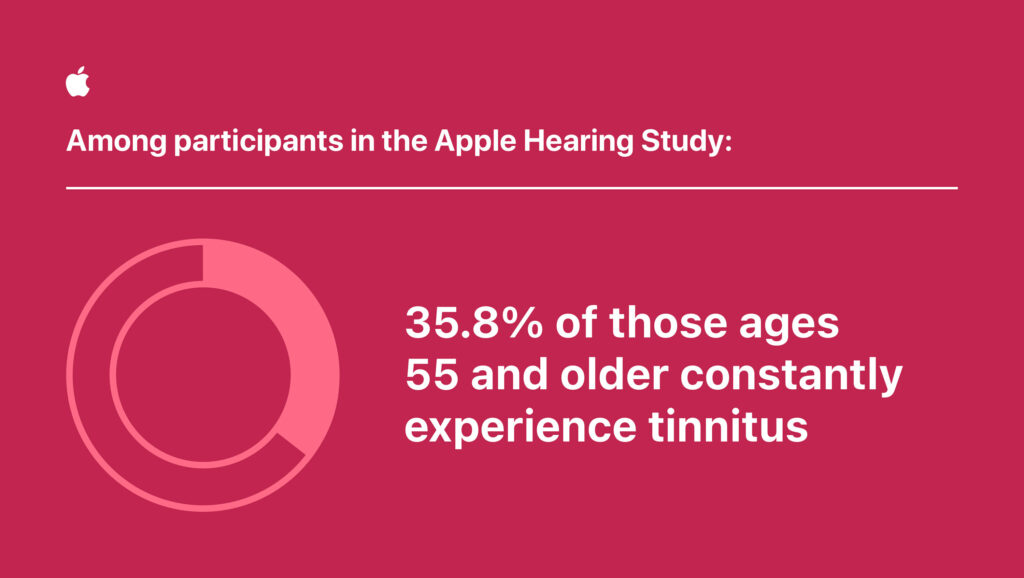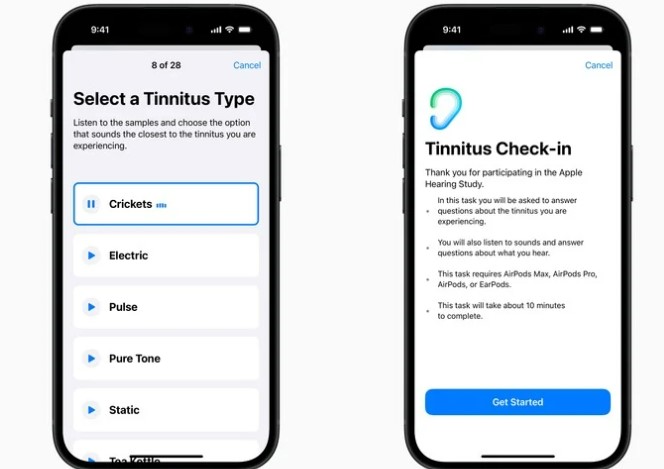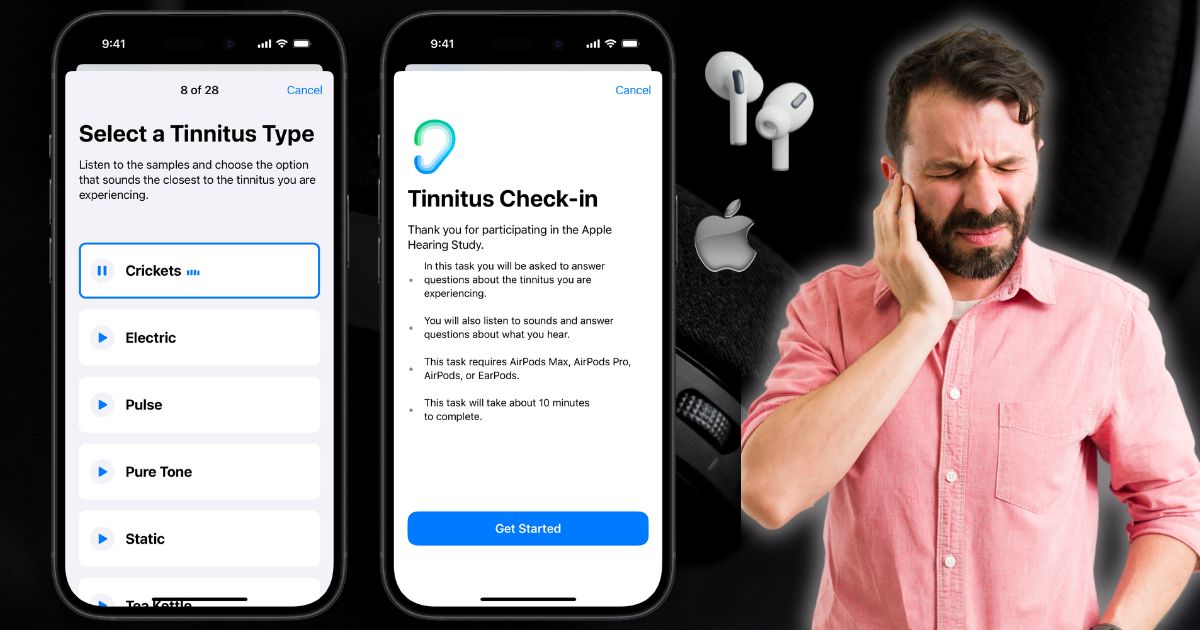Apple, in collaboration with the University of Michigan, has released groundbreaking findings from the Apple Hearing Study, shedding light on tinnitus in one of the largest surveys to date.
The study, which reviewed responses from over 160,000 participants, aims to improve the understanding of tinnitus characteristics and inform future research on potential treatments.
Prevalence and Impact of Tinnitus
The study’s findings are significant, revealing that 77.6 percent of participants have experienced tinnitus at some point in their lives. Of these, roughly 15 percent experience tinnitus daily. The prevalence of tinnitus increases with age, with individuals aged 55 and older being three times more likely to report daily tinnitus compared to those aged 18-34.
Additionally, the study found gender differences, with 2.7 percent more males experiencing daily tinnitus than females, though 4.8 percent more males reported never having experienced tinnitus.
“Roughly 15 percent of our participants experience tinnitus daily. Tinnitus is something that can have a large impact on a person’s life. The trends that we’re learning through the Apple Hearing Study about people’s experience with tinnitus can help us better understand the groups most at risk, which can in turn help guide efforts to reduce the impacts associated with it. The Apple Hearing Study gives us an opportunity that was not possible before to improve our understanding of tinnitus across demographics, aiding current scientific knowledge that can ultimately improve management of tinnitus.”
–Rick Neitzel, PhD, University of Michigan School of Public Health
Tinnitus, often described as a ringing in the ears, can vary significantly from person to person in both duration and severity. The majority of participants reported brief episodes of tinnitus, while 14.7 percent reported experiencing it constantly. Among participants aged 55 and older, 35.8 percent experienced constant tinnitus. Men were found to experience constant tinnitus 6.8 percent more than women.

The study also delved into the causes of tinnitus, with 20.3 percent of participants attributing it to noise trauma or exposure to excessively high levels of noise. Stress was the second most cited cause at 7.7 percent.
These findings suggest that managing stress and protecting hearing from excessive noise could potentially reduce the risk of developing tinnitus.
Tinnitus Management Strategies
Participants in the Apple Hearing Study reported various methods for managing their tinnitus. The most common strategies included using noise machines (28 percent), listening to nature sounds (23.7 percent), and practicing meditation (12.2 percent). Less than 2.1 percent of participants reported using cognitive and behavioral therapy for tinnitus management. These insights highlight the need for more effective and accessible treatments for tinnitus sufferers.
Detailed Characterization of Tinnitus
To better characterize tinnitus, participants completed an app-based sound test in addition to survey questions. The majority of participants described their tinnitus as a pure tone (78.5 percent) or white noise (17.4 percent). Among those who described a pure tone, 90.8 percent reported a pitch at 4 kilohertz or above, similar to the sound of a songbird’s call. Additionally, 83.5 percent identified their tinnitus as a single tone, while 16.5 percent described it as a high-pitched, whistling teakettle tone.

For those who matched their tinnitus to white noise, 57.7 percent identified it as a static tone, 21.7 percent compared it to a cricket tone, 11.2 percent said it resembled an electric tone, and 9.4 percent described it as a pulse tone. These detailed characterizations provide valuable data for further research and potential treatment development.
Broader Impact and Future Directions
The Apple Hearing Study is part of a trio of landmark public health studies conducted through the Research app on iPhone, launched in 2019. This ongoing study has already collected about 400 million hours of calculated environmental sound levels, supplemented with lifestyle surveys. The data aims to analyze how sound exposure affects hearing, stress, and hearing-related aspects of health. The findings will also be shared with the World Health Organization as part of its Make Listening Safe initiative.
Apple’s technology plays a significant role in supporting hearing health. The Noise app on Apple Watch can notify users when environmental noise levels might affect their hearing health, while the Health app on iPhone tracks exposure to sound levels and informs users if they exceed WHO-recommended levels. Additionally, features like Active Noise Cancellation and Loud Sound Reduction mode on AirPods Pro help manage exposure to harmful noise levels.
For more information visit Apple’s website here.
**Readers interested in hearing enhancement capabilities of Apple devices may want to check out this interview with Dr. Nicky Chong-White of the National Acoustic Laboratories:
Source: Apple






